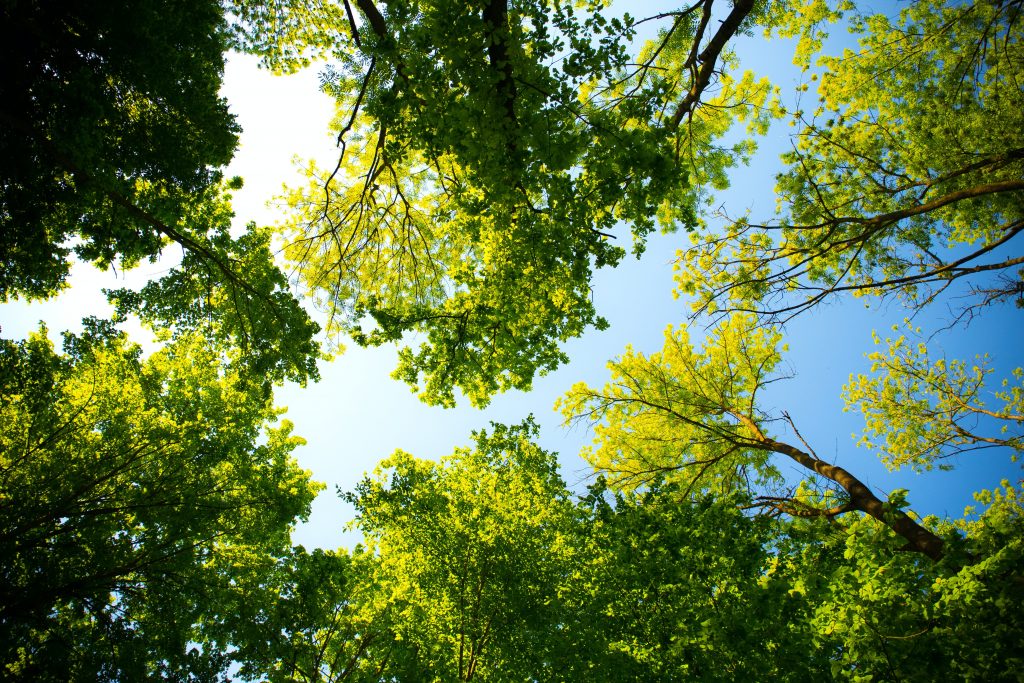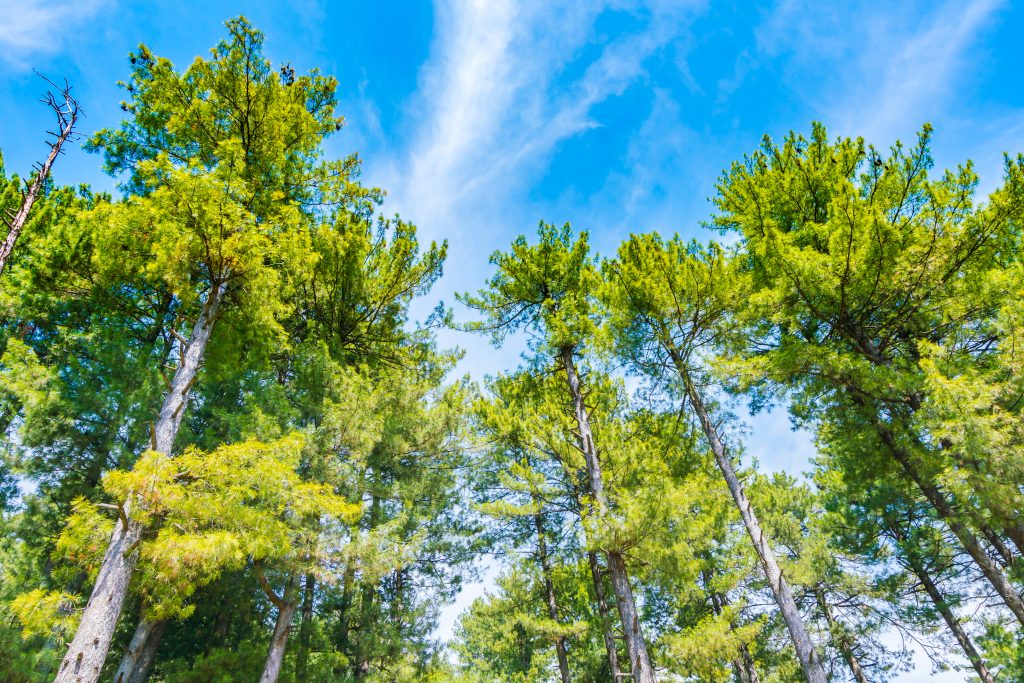Falling leaves and debris, particularly during the autumn season, can pose various challenges in both urban and natural environments. These challenges arise from the accumulation of organic matter and debris, primarily from trees, and can impact safety, aesthetics, environmental health, and infrastructure. Here’s an explanation of the challenges posed by falling leaves and debris:

- Slip and Fall Hazards: Wet leaves on sidewalks, driveways, and roadways can create slippery conditions, increasing the risk of accidents and injuries, particularly for pedestrians and drivers.
- Stormwater Management: Accumulated leaves and debris can block storm drains and water channels, leading to localized flooding during heavy rain events. This can result in property damage and road closures.
- Infrastructure Damage: Debris, including fallen branches and leaves, can cause damage to infrastructure such as roofs, gutters, and drainage systems. Large branches may also pose a risk to power lines and utilities.
- Fire Hazards: Dry leaves and debris can become a fire hazard, especially in regions prone to wildfires. Accumulated debris can serve as fuel and accelerate the spread of fires.
- Aesthetic Concerns: The presence of fallen leaves and debris can negatively impact the visual appeal of urban and natural landscapes, affecting property values and community aesthetics.
- Air Quality: When leaves and debris are burned or left to decompose inappropriately, they can release pollutants into the air, contributing to poor air quality and respiratory health issues.
- Pest Habitat: Fallen leaves and debris can provide a habitat for pests, such as rodents and insects, which may lead to increased pest infestations in the area.
- Environmental Impact: Decomposing leaves in bodies of water can consume oxygen, leading to reduced water quality and harm to aquatic life. In natural ecosystems, excessive leaf litter can disrupt nutrient cycling and impact plant and animal communities.
- Reduced Light Exposure: Dense canopies of trees shedding leaves can reduce sunlight penetration, affecting the growth of understory vegetation and limiting light exposure to properties and gardens.
- Maintenance Costs: Municipalities and property owners may incur expenses for leaf and debris cleanup, disposal, and infrastructure repairs, adding to maintenance costs.
- Biodiversity Impact: In natural ecosystems, excessive leaf litter can alter soil composition and affect the growth of native plants, potentially impacting local biodiversity.
- Public Health Concerns: Decomposing organic matter can produce mold spores and allergenic compounds, potentially leading to health issues, especially for individuals with allergies or respiratory conditions.
- Wildfire Risk: In wildfire-prone areas, dry leaves and debris can serve as fuel, increasing the risk and intensity of wildfires during dry seasons.
To address these challenges, communities and property owners often implement various management practices, such as leaf collection, composting, mulching, and stormwater management, to mitigate the negative impacts of falling leaves and debris while promoting safety, environmental health, and aesthetics.
Importance Of Proper Management For Safety And Environmental Reasons
Proper management of falling leaves and debris is crucial for both safety and environmental reasons. Implementing effective management practices not only helps ensure the well-being of communities but also contributes to the preservation of ecosystems and the sustainable use of resources. Here’s why proper management is important for safety and the environment:

Safety Reasons:
- Accident Prevention: Managing fallen leaves and debris helps prevent accidents, particularly slip and fall incidents. Wet or decaying leaves on sidewalks, roads, and walkways can create hazardous conditions, leading to injuries.
- Reduced Fire Hazards: Proper management, including the removal of dry leaves and debris, reduces the risk of fire hazards. Accumulated organic matter can serve as fuel for fires, endangering lives and property.
- Infrastructure Protection: Regular leaf and debris management protect infrastructure such as drainage systems, roofs, and utilities from damage. Leaves and debris can block gutters, causing water damage, and fallen branches can damage power lines and structures.
- Flood Prevention: Keeping storm drains and water channels clear of debris prevents localized flooding during heavy rain events. This helps safeguard property and ensures that roads remain passable.
- Improved Air Quality: Proper disposal or composting of leaves and debris reduces the need for burning, which can release harmful pollutants into the air. This, in turn, contributes to better air quality and reduces the risk of respiratory issues.
Environmental Reasons:
- Ecosystem Health: Managing leaves and debris in natural environments helps maintain ecosystem health. Excessive leaf litter can disrupt nutrient cycling, affect soil composition, and impact plant and animal communities.
- Water Quality: Preventing leaves and debris from entering bodies of water, such as lakes and rivers, protects water quality by reducing the consumption of oxygen during decomposition, which can harm aquatic life.
- Biodiversity Conservation: In natural ecosystems, proper leaf and debris management can promote the growth of native plants and prevent the proliferation of invasive species, supporting biodiversity conservation.
- Reduced Pest Habitats: Effective debris management minimizes the availability of habitats for pests like rodents and insects, reducing the risk of pest infestations.
- Sustainable Resource Use: Composting and mulching leaves and organic matter can provide valuable compost and mulch materials for gardening and landscaping, promoting sustainable resource use and reducing the need for synthetic fertilizers.
- Aesthetic Improvement: Managing leaves and debris in urban and natural settings enhances aesthetics, contributing to the visual appeal of communities, parks, and landscapes.
- Community Engagement: Involving communities in leaf and debris management fosters a sense of environmental responsibility and community stewardship, promoting a culture of sustainability.
- Wildlife Habitat Protection: Proper management helps maintain suitable habitats for wildlife by preventing excessive accumulation of debris, which can affect nesting and foraging sites.
Proper management of falling leaves and debris is essential for safety by preventing accidents, protecting infrastructure, and reducing fire and flood hazards. On an environmental level, it promotes ecosystem health, preserves water quality, supports biodiversity conservation, and encourages sustainable resource use. Combining safety and environmental considerations, responsible management practices contribute to the well-being of both people and the planet.
Effectively managing leaves and debris, whether in urban or natural settings, involves adopting best practices that balance safety, environmental responsibility, and resource efficiency. Here are some best practices for managing leaves and debris:
Assessment and Planning:
- Assess the Extent: Determine the volume and types of leaves and debris that need management.
- Set Clear Objectives: Define specific goals, such as safety improvement, environmental protection, and resource utilization.
Collection and Removal:
- Leaf Collection: Use leaf blowers, vacuums, or rakes to efficiently gather leaves.
- Debris Removal: Remove fallen branches and larger debris from walkways and roads.
- Disposal: Properly dispose of leaves and debris through composting, recycling, or responsible disposal methods.
- Regular Schedules: Establish and adhere to routine collection and removal schedules, especially during peak leaf-fall seasons.
Composting and Mulching:
- Composting Leaves: Compost leaves to create nutrient-rich compost for gardens and landscaping.
- Mulching Leaves: Use mulching equipment and techniques to shred leaves into valuable mulch for moisture retention and weed control.
Environmental Considerations:
- Avoid Burning: Discourage burning leaves and debris, as it can release pollutants into the air and contribute to air quality issues.
- Prevent Water Pollution: Ensure that leaves and debris do not enter storm drains, water bodies, or wetlands, which can harm water quality and aquatic life.
- Erosion Control: Implement erosion control measures to prevent runoff and soil erosion associated with leaf and debris management.
Public Education and Involvement:
- Community Engagement: Educate residents about proper leaf and debris management practices and encourage responsible disposal methods.
- Volunteer Programs: Organize community cleanup events and involve volunteers in leaf and debris management efforts.
Equipment and Safety:
- Equipment Maintenance: Regularly maintain leaf blowers, vacuums, mulchers, and safety features to ensure safe and efficient operation.
- Safety Protocols: Train workers and volunteers on safe equipment operation and provide appropriate safety gear, such as goggles and gloves.
Monitoring and Adaptation:
- Regular Evaluation: Continuously monitor the effectiveness of leaf and debris management efforts, assessing environmental impacts and community feedback.
- Adaptation: Make necessary adjustments based on evaluation results, continuously improving management practices.
Sustainable Resource Use:
- Reuse Materials: Encourage the reuse of materials, such as compost and mulch, in landscaping and gardening to reduce the need for synthetic fertilizers.
Green Infrastructure:
- Consider implementing green infrastructure practices, such as rain gardens and permeable pavements, to manage stormwater and improve environmental outcomes.
Local Regulations and Guidelines:
- Familiarize yourself with local regulations and guidelines related to leaf and debris management, ensuring compliance with any applicable laws.
By following these best practices, communities and property owners can effectively manage falling leaves and debris while promoting safety, environmental health, and resource efficiency. These practices contribute to cleaner, safer, and more sustainable urban and natural environments.
Assessing the extent and type of falling leaves and debris is an essential first step in developing an effective management plan. It helps determine the scale of the task, prioritize areas for cleanup, and select appropriate methods for debris removal and disposal. Here’s how to assess the extent and type of falling leaves and debris:
- Site Survey:
- Conduct a thorough survey of the area where leaves and debris are falling. This may include public parks, streets, gardens, forests, or other relevant spaces.
- Volume and Accumulation:
- Estimate the volume of leaves and debris by visually assessing how thickly they accumulate in different areas.
- Pay attention to areas with the highest accumulation, as these may require more immediate attention.
- Types of Debris:
- Identify the types of debris present, as different types may require different management approaches. Common types of debris include:
- Leaves: Determine if the majority of debris consists of leaves and if there are variations in leaf size, type, or composition.
- Branches and Twigs: Note the presence of larger debris, such as fallen branches, twigs, or tree limbs.
- Other Debris: Identify any non-organic debris, such as litter, trash, or plastic waste.
- Location and Prioritization:
- Determine the locations where fallen leaves and debris pose the most significant challenges or hazards. These may include high-traffic pedestrian areas, roadways, storm drains, or sensitive ecological zones.
- Prioritize areas based on safety concerns, environmental sensitivity, and public use. For example, prioritize leaf removal from sidewalks and playgrounds in urban areas.
- Seasonal Variation:
- Consider the seasonal variation in leaf fall. Some regions experience more intense leaf fall during the autumn season, while others may have continuous leaf drop throughout the year.
- Environmental Impact:
- Assess the potential environmental impact of debris accumulation, such as its effect on water bodies, wildlife habitats, or the risk of wildfires.
- Community Feedback:
- Gather input and feedback from local residents, community groups, or environmental organizations to understand their concerns and priorities regarding leaf and debris management.
- Data Collection:
- Collect quantitative data, such as the estimated volume of leaves and debris in specific areas, to aid in planning and resource allocation.
- Consult Experts:
- Seek input from arborists, landscape professionals, or environmental experts who can provide insights into the types of leaves and debris present and their potential effects.
- Legal and Regulatory Considerations: – Familiarize yourself with any local regulations or guidelines related to leaf and debris management, as these may impact the approach you can take.
If you need a tree service in Utah, you can call:
Truco Services, Inc.
4640 Commerce Drive
Murray, Utah 84107
(801) 466-8044
https://truetreeservices.com/

